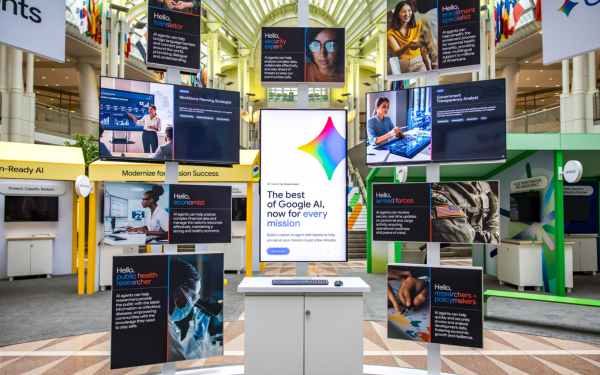Why businesses need a hybrid multi-cloud strategy
Information technology has evolved rapidly over the past few years, bringing more powerful and faster computing in the cloud, richer software, better analytics, mobility, and sensors, this is the goal. that most enterprise technology vendors pursue. Pioneers have access to legacy technology with proprietary systems, higher switching costs, and vendor lock-in that lead to the way they view new trends and systems like hybrid multi cloud. few positives.
When hybrid multi cloud gradually becomes a trend
There is no better example of this than the trend towards hybrid cloud and multi-cloud computing technology. In either case, cloud technology provides customers with the ability to better utilize existing resources and take advantage of newer ways to compute, store, and analyze data. This is not theory, but reality. According to Gartner, 81% organizations are working with two or more public cloud providers. A multi-cloud strategy gives companies the freedom to use the best cloud possible for each workload.

In contrast, single-cloud stacks impose a significant overhead. Where there can be greater power drawn from the unique capabilities of every cloud, there is the greater complexity and limitations of proprietary systems. Where there is more detailed information, there is analyzed data. Where there may be resiliency of completely disparate systems, there is a risk of centralization. Where there can be more innovation and efficiency, there will be obstacles. Where there may be a single view of assets, there is a lack of control, messy security and unclear costs.
Build hybrid multi cloud with Google Cloud
Google Cloud is committed to meeting customer needs by providing choice, flexibility, and openness. This commitment is reflected in their contributions to projects such as Kubernetes, TensorFlow and many other projects.
Google Cloud is the birthplace and home of the Kubernetes project. Created by the same engineers who built Kubernetes, Google Kubernetes Engine (GKE) is a service Kubernetes easy-to-use cloud-based application to run containerized applications — anywhere, not just on GCP. Anthos's reach builds on GKE's strong foundation, so you can build hybrid and multi-cloud deployments with good cloud software production, release, and management more — the way you want. That's the key to how a healthy cloud ecosystem works.

Anthos and Looker support from Google Cloud
Khả năng linh hoạt để chạy các ứng dụng ở những nơi bạn cần mà không thêm phức tạp là yếu tố chính trong việc lựa chọn Anthos — nhiều khách hàng muốn tiếp tục sử dụng các khoản đầu tư hiện có của họ cả tại chỗ cũng như trên các đám mây khác và việc có một lớp quản lý chung sẽ giúp họ nhóm cung cấp dịch vụ chất lượng với chi phí thấp.
Today, just two years after launch, Anthos now supports more types of workloads, in more types of environments, in more locations. According to Forrester, Anthos helps improve 40% to 55% platform performance. Going even further into multi-cloud, recently, Google has announced Anthos, so customers can have high-performance systems with minimal latency in remote locations. And the leading API management platform, Apigee, works on any cloud or on-prem.

Anthos is just one part of our commitment to maximize customer power, choice and control wherever possible. In July, Google announced BigQuery Omni, a multi-cloud version of their popular analytics services. For the first time, an enterprise can seamlessly connect directly to their data on Google Cloud, Amazon Web Services (AWS) and (soon) Microsoft Azure, managing large-scale data analytics quickly without having to move or copy datasets a single user interface.
Earlier this year, Google Cloud Platform announced an acquisition Looker, a multi-cloud data analytics platform that supports multiple data sources and deployment methods. Naturally, Looker is part of Google Cloud which still supports hosting on public clouds like AWS and connecting to data sources like Redshift, Snowflake, BigQuery and more than 50 other supported SQL dialects, so you can link to multiple databases, avoid database locking, and maintain a multi-cloud data environment.

From open source to multi-cloud to what might be called “analytics everywhere,” Google’s strategy is not based on predetermined needs or some sense of “how it always has been” in enterprise computing, but based on Google's experience and vision of how the system has evolved and where it is likely to go.
You can say that the system is accessible from anywhere, with a data processing machine for the right purpose. Done right, it's the future: Enabling businesses to innovate and compete wherever they want, using the data they own to best serve their customers with better products and services .
Google believes that history is on the side of open source-based multi-cloud APIs. Many years ago, open source was condemned, and sometimes severed, to preserve the power of vendors over customers. It was finally allowed and today it is welcomed. Now it's multi-cloud's turn to move from opt-out to adoption and eventually ubiquity.
There's a good chance your cloud will soon do more than it should have in the first place.
Contact Gimasys for advice on a transformation strategy that is suitable for your business situation and to experience the free Google Cloud Platform application suite:
- Hotline: Hanoi: 0987 682 505 - Ho Chi Minh: 0974 417 099
- Email: gcp@gimasys.com
- Sign up for a free consultation: Here.
Source: Gimasys



